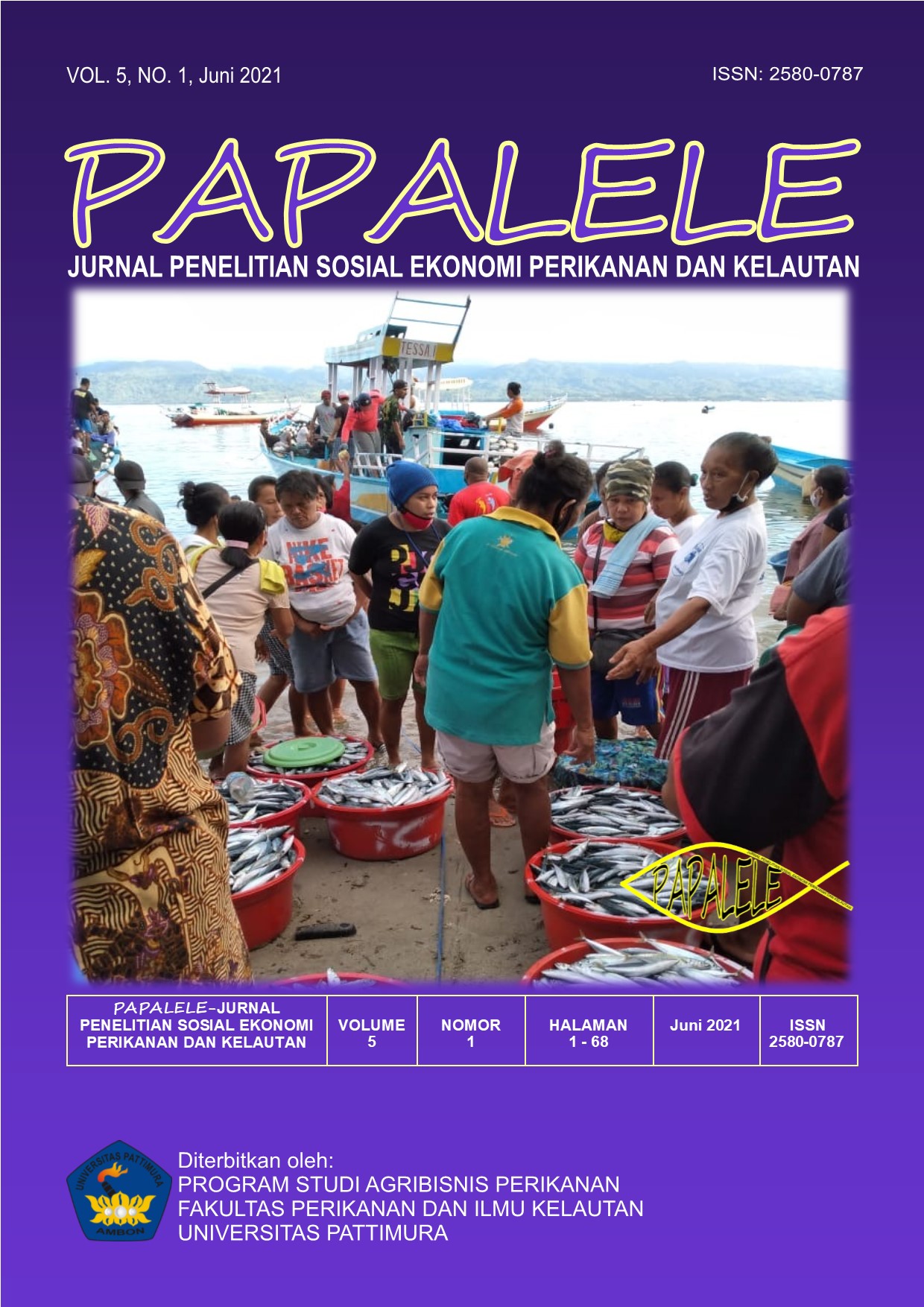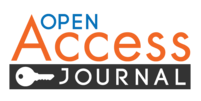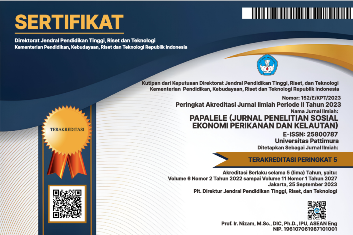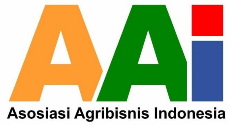VALUASI EKONOMI SUMBERDAYA PERIKANAN TANGKAP DI PERAIRAN NEGERI WAAI KECAMATAN SALAHUTU MALUKU
Abstract
The potency of capture fishery resources at Waters of Waai allows the fishermen to utilize it in order to support the community economy. However, if it is not carried out following the principles of sustainable fisheries, it can cause problems such as overfishing, overcapacity and resource degradation. The study aims to estimate the economic value of capture fishery resources at Waters of Waai as one of the basic to determine the sustainable fisheries management. Primary data collection was carried out on 7 purse seine business owners and analyzed using the effect on production (EOP) approach. The result found that the demand functions of capture fishery resources at Waters of Waai were influenced by price (X1), income (X2), age (X3), business experience (X4) and number of dependants (X5). Amount of consumer surplus is Rp 642.113.972 per fisherman per year and the economic value of capture fishery resources at Waters of Waai is Rp 55.256.403 per hectare per year.
Downloads
References
Adrianto, L. 2006. Sinopsis Pengenalan Konsep dan Metodologi Valuasi Ekonomi Sumberdaya Pesisir dan Laut. Pusat Kajian Sumberdaya Pesisir dan Lautan. Institut Pertanian Bogor. Bogor.
Badan Pusat Statistik (BPS) Kabupaten Maluku Tengah. 2018. Maluku Tengah dalam Angka Tahun 2017. Maluku Tengah.
Beddington, J. R., Agnew, J. R., Clark, C. W. 2007. Current Problems in the Management of Marine Fisheries. Science 316: 1713-1716.
Fauzi, A. 2006. Ekonomi Sumber Daya Alam dan Lingkungan Teori dan Aplikasi. PT Gramedia Pustakan Utama. Jakarta.
Freeman III, A. M. 2003. The Measurement of Environmental and Resources Values: Theory and Methods Second Edition. RFF Press. Washington DC.
Garcia, S. M., Zerbi, A., Aliaume, C., Do Chi, T., Lasserre, G. 2003. The Ecosystem Approach to Fisheries. Issues. Terminology Principles. Institutional Foundations. Implementation and Out-Look. FAO Fisheries Technical Paper. 443: 71.
Goldin, C. 2016. Human Capital. National Bureau of Economic Research. Handbook of Cliometrics, hal 55-86. Harvard.
Kotler, P dan Keller, K. L. 2013. Manajemen Pemasaran, Jilid 2, Edisi 13. Erlangga. Jakarta.
Lieng, S. N., Yagi, N., Mori, A., Hastings, J. 2018. Savings-Group Improvements Contribute to Sustainable Community-Fisheries Management: A Case Study in Cambodia. Sustainability, 10 (8): 2905.
Matakupan, H. J., Latumeten, D., Noija., Sangadji., Johanis, C. 2006. Kajian Prototip Jaring Insang (Gill Net) di Provinsi Maluku. Dinas Perikanan dan Kelautan Provinsi Maluku. Maluku.
Pelupessy, L dan Arini, I. 2016. Keseragaman Jenis-Jenis Ikan Pada Komunitas Mangrove Desa Waai Kecamatan Salahutu Kabupaten Maluku Tengah. Jurnal Biopendix, Vol 3 (1) : 01-08.
Putong, I. 2002. Pengantar Ekonomi Mikro dan Makro. Ghalia Indonesia. Jakarta
Rizal, A., Iskandar., Herawati, H., Dewanti, L, P. 2018. Potret dan Review: Strategi Pembangunan Perikanan dan Kelautan. Unpad Press. Bandung.
Sanger, C. L. M., Jusuf, A., Andaki, J. A. 2019. Analisis Orientasi Kewirausahaan Nelayan Tangkap Skala Kecil dengan Alat Tangkap “JUBI†di Kelurahan Batulubang Kecamatan Lembeh Selatan Kota Bitung. Akulturasi: Jurnal Ilmiah Agrobisnis Perikanan, Vol 7 (1): 1095-1101.
Undang-Undang Republik Indonesia Nomor 13 Tahun 2003 Tentang Ketenagakerjaan. Jakarta,
Widyawati, R. F., Pujiyono, A. 2013. Pengaruh Umur, Jumlah Tanggungan Keluarga, Luas Lahan, Pendidikan, Jarak Tempat Tinggal Pekerja ke Tempat Kerja dan Keuntungan Terhadap Curahan Waktu Kerja Wanita Tani Sektor Pertanian di Desa Tajuk, Kecamatan Getasan, Kabupaten Semarang. Universitas Diponegoro. Jurnal Ekonomi, 2 (3): 1-14.
Copyright (c) 2021 Angel Ruban, Saiful Saiful, Gratia Dolores Manuputty

This work is licensed under a Creative Commons Attribution-NonCommercial 4.0 International License.











